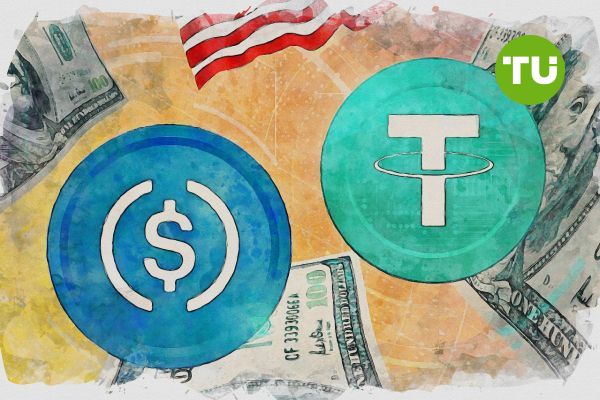Banks, Circle and Tether jockey ahead of stablecoin laws
 Stablecoin turf wars erupt as banks
Stablecoin turf wars erupt as banks
Bank of America CEO Brian Moynihan’s recent pledge to issue a bank‑backed stablecoin, should Congress provide a framework, underscores Wall Street’s mounting interest in digital dollars.
Since Moynihan’s Feb. 26 comments, Bank of America, through trade bodies such as the Bank Policy Institute and American Bankers Association, has lobbied lawmakers to favor federally chartered banks over nonbank entities, including big‑tech firms like Amazon and Meta. Banks argue that separation of banking and commerce—long a U.S. regulatory tenet—must apply to stablecoins to protect customer privacy and prevent anti‑competitive data mining. However, neither the Senate’s GENIUS Act nor the House’s STABLE Act, both advancing through committee, currently bar “qualified” nonbanks from issuing payment stablecoins, reports The Block.
Circle and Tether in the spotlight
Amid the banking push, Circle and Tether are vying to shape reserve and auditing requirements. U.S.‑based Circle promotes its USDC as 100 percent backed by short‑dated Treasury bills and cash deposits, audited and transparent—traits aimed at winning favor in Washington. In contrast, offshore‑based Tether, the $145 billion USDT issuer, backs reserves with a broader asset mix—including U.S. Treasurys, Bitcoin, precious metals and secured loans—and is now courting U.S. regulators to establish a domestic subsidiary and adopt Big Four audits. “Artificial barriers only protect incumbents—not users,” Circle CEO Jeremy Allaire said recently, as Tether’s Paolo Ardoino countered that tech firms can bring compliance and transparency to the market.
What’s next for stablecoin regulation
Lawmakers on both sides of the aisle have voiced concerns over nonbank issuance. Rep. Maxine Waters (D‑Calif.) warned against enabling retail giants such as Walmart or Meta to launch tokens without clear safeguards, while Rep. Bryan Steil (R‑Wis.) favors an open framework that lets competition determine winners. As Congress works toward reconciling the GENIUS and STABLE Acts, the final rules will determine who may legally mint dollar‑pegged tokens—and under what reserve and transparency standards. Industry observers say the outcome could define the U.S. stablecoin landscape—and its place in global digital finance—for years to come.
Read also: South Korea crypto market slows down after rapid growth













































































































































